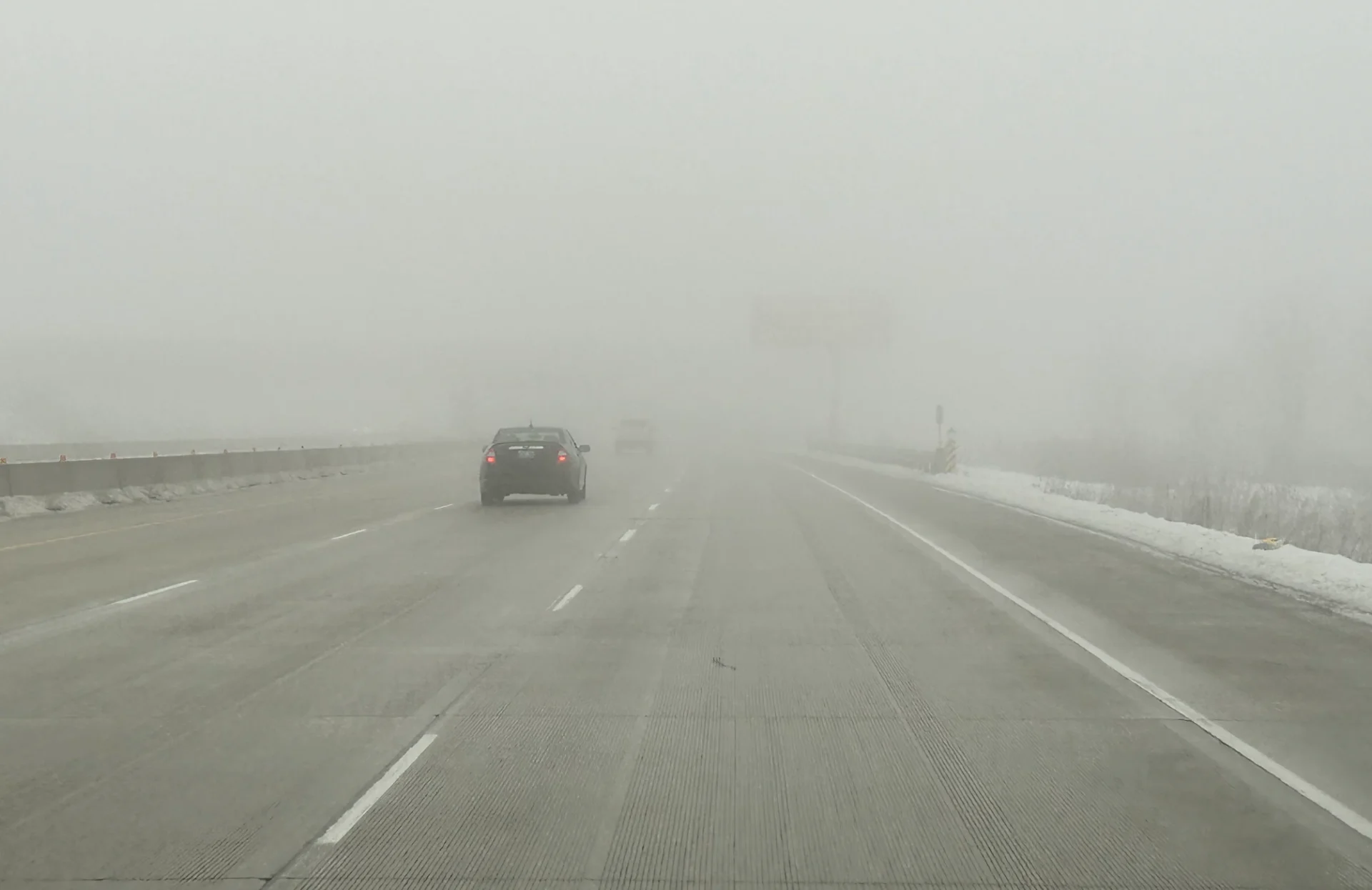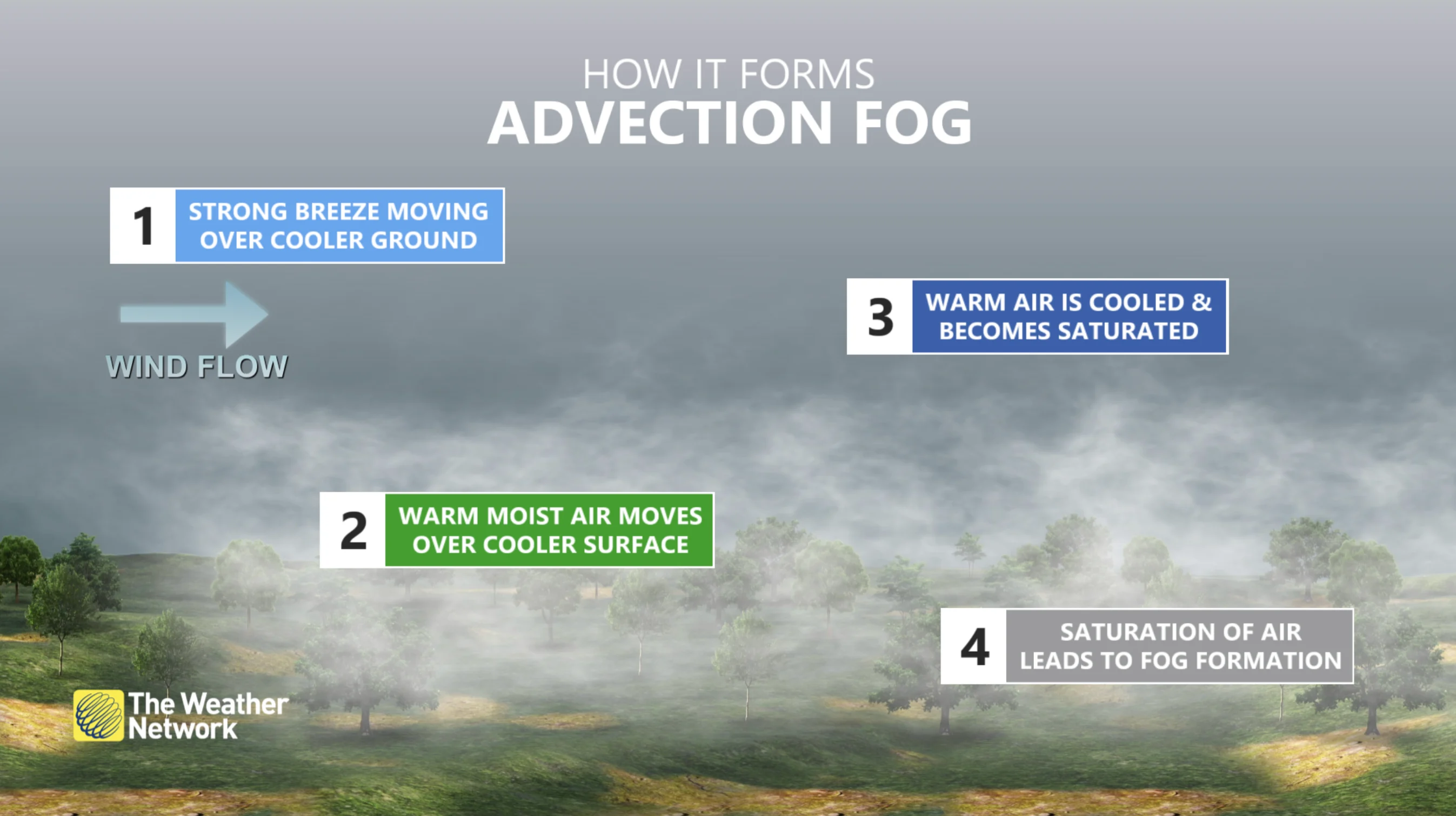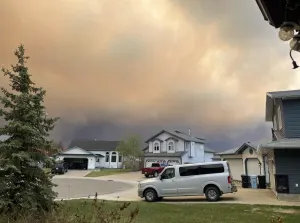
Follow these tips for staying safe while driving in thick fog
Foggy roads can be a nightmare. Here are some tips on how to stay safe when you have to drive through dense fog
Navigating the roads can be a chore on a sunny afternoon. Throw in thick fog and slick pavement and just running errands turns into a challenge that tests even the most experienced drivers.
Staying safe on fog-covered roads only takes a little extra effort—a worthwhile endeavour to make sure you and your neighbours arrive safe and sound.
DON’T MISS: Avoiding a pileup rests on remembering these driving tips
Fog is the most dangerous weather hazard you’ll drive in
Rain-slicked roads are rough and frozen precipitation makes them downright treacherous. But out of all of those hazards, fog is still the most dangerous weather condition you’re most likely to encounter on the roads.
Fog is a year-round danger for drivers across Canada, the U.S., and around the world.

Warm air moving over the cooler waters of the Great Lakes and Atlantic Ocean makes reduced visibility a common threat for drivers throughout Ontario—especially in the Greater Toronto Area—as well as folks across the Maritimes.
Speed can be fatal in thick fog
Thick fog is responsible for some of the worst pile-up accidents in modern history. Eight people died and dozens more were injured when an 87-vehicle pileup occurred on a fog-covered Highway 401 in Windsor, Ontario, back in September 1999.
Slowing down safely can help prevent wrecks and pile-up accidents on foggy days when visibility may fall to a few hundred metres at most. Driving slower than normal requires conscious effort and constant awareness of your own vehicle and other drivers around you.
WATCH: Fog led to an 87-vehicle pileup on Canada's busiest highway
An average car travelling at 60 km/h takes nearly 90 metres to come to a complete stop once the driver recognizes a hazard and steps on the brake, according to the Ottawa Safety Council. Reaction times and braking distances increase rapidly at highway speed and when roads are slick.
It’s common for dense fog to reduce visibility down to 200 metres or less, which means that the average stopping distance at normal cruising speed may not be long enough to avoid hitting another vehicle, a person, or an animal on a fog-covered road.
Officials often recommend driving at an appropriately slow speed for a given road. Driving too far below the speed limit can actually increase the risk of collisions.
Keep your lights on and low
The only thing worse than not being able to see something else in the fog is someone else not being able to see you in the fog.
Anyone driving on a foggy day should keep their low-beam headlights or fog lights on—even during the day. Not only can headlights help you see the road ahead, but it allows other drivers to see that you’re there as well.

Dense fog in Moncton, New Brunswick. Image submitted by Trevor Gertridge.
Avoid using high-beam headlights in the fog. Densely packed water droplets in fog scatter bright lights like high-beams, creating an intense glare that can actually make driving less safe for you and other motorists.
If you have to pull off the road for safety reasons, turn on your hazard lights and pull far off the side of the road. This allows other drivers to see that you’re stopped and a safe distance from the edge of the roadway.
Watch the side of the road
Obstacles aren’t the only danger involved with foggy travel. Just driving on the road itself requires a bit of concentration when it’s hard to see the pavement in front of you. Watch the side of the road and the reflectors for added help to guide you where you’re going.
If you’re travelling in the right lane, glancing at the solid line or physical edge of the road can help you stay on the right track. Similarly, the bright reflectors that dot the edges of lanes are intended to help you see and stay in your own lane.
This habit doesn’t just help in the fog, either. If you encounter an oncoming vehicle with intensely bright headlights—we’ve all been there before—quickly glancing at the lines can help spare you the dots in your vision and keep you cruising along safely.
Remain mindful of everyone around you
Cautious drivers can do everything right and still wind up in a tight spot if other drivers don’t slow down, use their headlights, or pay attention to their surroundings.
Doubling the amount of space between you and the vehicle in front of you can buy a little extra braking distance if you have to stop in a hurry.
Try to avoid passing other vehicles or speeding up if someone is tailgating you—increasing speed only increases the danger on foggy roads.
Turn signals are critically important during spells of poor visibility, as well. Signaling that you need to turn gives other vehicles a heads-up that you’re about to slow down, potentially avoiding the risk of a rear-end collision.










